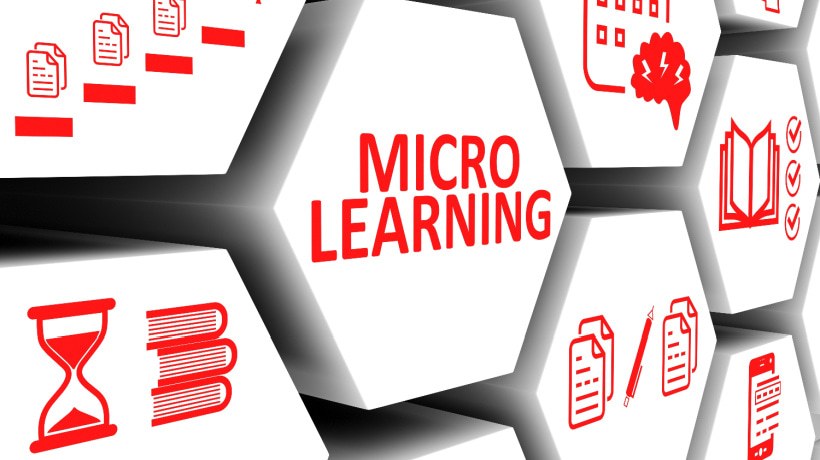How Small Lessons Can Drive Big Impact
Attention spans are shrinking; research famously pegged the average human attention span at around 8 seconds (shorter than a goldfish). Modern learners also expect information on demand and in bite-sized formats, much like they consume social media or YouTube tutorials. For HR managers, L&D professionals, and corporate trainers, this raises a pressing challenge: How can we deliver effective training when learners can barely spare a few minutes and struggle to stay focused?
The reality is that most employees have very limited time for formal learning—one study found just 1% of the work week (about 24 minutes) is available for training. Traditional training approaches, day-long workshops, lengthy slide decks, and thick manuals are ill-suited to this new landscape of limited attention and time. The good news? Microlearning offers a solution. In this article, we'll explore how short, focused learning modules can boost engagement and retention, fit into busy schedules, and transform corporate training. We'll also cover implementation strategies, the science behind microlearning, and the role of gamification.
Why Traditional Training Falls Short
Conventional training methods have long struggled with engagement and knowledge retention, and these issues are magnified in today's fast-paced workplace. Some key problems with traditional training include:
1. Time And Attention Demands
Long seminars or multi-hour eLearning courses demand uninterrupted focus that modern employees simply can't give. With only minutes a week to spare for learning, lengthy training sessions often get skipped or rushed. Even when completed, learners are mentally exhausted and less receptive by the end.
2. Information Overload And Forgetting
Dumping a large volume of information in one go overwhelms learners. Cognitive science shows that without reinforcement, people forget roughly 50% of new information within an hour, 70% within a day, and 90% within a week. No wonder employees often retain only fragments of an all-day training. A passive lecture or slide presentation might yield as low as 10% knowledge retention after a week, meaning most of that training effort is lost.
3. Low Engagement
Traditional training is often passive; think one-way lectures or page after page of text. Learners disengage easily, leading to poor completion rates and minimal behavior change. Boredom in training is a real issue. If trainees are tuning out or checking their phones, the training loses its impact.
4. One-Size-Fits-All Content
In many traditional programs, every employee gets the same material in the same format, regardless of their prior knowledge or immediate needs. This lack of personalization and real-world context makes it harder for learners to connect the training to their jobs, and they may quickly revert to old habits.
5. Siloed, Infrequent Learning
Old-school training might happen in big yearly workshops or onboarding bootcamps, separated from daily work. This gap means new skills aren't reinforced in the flow of work. Without follow-up, any gains from the training diminish over time (the classic "learning–doing gap").
In short, lengthy and infrequent training approaches are often inefficient and ineffective for the modern workforce. They consume a lot of time for very little return in terms of learning outcomes. This is where microlearning comes in as a game-changer.
Training With Microlearning: Big Benefits In Small Packages
Microlearning refers to delivering training in small, focused chunks; think short learning modules that take only a few minutes to complete. Instead of a one-hour course on a broad topic, you might have a series of 5-minute lessons, each targeting a specific skill or concept. By aligning training with how people actually pay attention and learn today, microlearning offers several powerful benefits:
Higher Learner Engagement
Bite-sized content is inherently more digestible and often more engaging. Learners are more willing to start a 5-minute module than a 50-minute one, and they're less likely to zone out. Many organizations report significantly higher engagement with microlearning. In fact, companies using microlearning see about 50% higher learner engagement compared to traditional training. The interactive, multimedia nature of microlearning (videos, quizzes, gamified elements) also keeps learners interested. Engaged learners learn better.
Better Knowledge Retention
Microlearning is designed to combat the forgetting curve. By focusing on one topic at a time and reinforcing key points through repetition, it helps knowledge stick. Studies have found that switching to microlearning can boost retention rates by 20% or more. Another study showed microlearning can improve knowledge retention by up to 60% versus traditional methods. The result is learners not only complete the training, but actually remember and apply what they learned.
Flexibility And Just-In-Time Learning
Because modules are so short and typically mobile-friendly, employees can learn anytime, anywhere during a coffee break, on the commute, or right before a relevant task. This flexibility means training no longer requires blocking off large chunks of work time. Microlearning fits into busy schedules and meets learners at their point of need. For example, a salesperson could quickly pull up a 3-minute refresher on product features minutes before a client call. This just-in-time accessibility makes training feel more relevant and immediately useful. Microlearning seamlessly integrates into the flow of work, fostering a culture of continuous learning rather than one-and-done training events.
In essence, microlearning enables "learning in the flow of work." Employees can continuously upskill without stepping away from their jobs for long. It's a win-win: learners get what they need in a convenient way, and organizations see more effective training outcomes (often with lower development costs and time). Now, how can you implement microlearning successfully? Let's look at key strategies.
Key Strategies For Implementing Microlearning In Your Training
Rolling out microlearning in a corporate training program involves more than just chopping content into smaller pieces. To truly harness microlearning in corporate training, consider these best practices:
1. Short, Focused Modules
Design each module around a single learning objective or topic. Keep lessons brief; usually, 3 to 7 minutes is ideal. This focus prevents cognitive overload and caters to short attention spans. For instance, instead of a 30-minute compliance video covering ten policies, create six five-minute microlessons, each on one policy or procedure. Learners find it much easier to digest and remember targeted nuggets of information.
2. Just-In-Time And On-Demand Access
Make microlearning available exactly when and where employees need it. Host content in an easily accessible library or learning portal so staff can pull up training on the fly. You can also push out timely microlessons (for example, a quick safety tip the morning a new machine is introduced). The key is to integrate learning into daily workflows. When training is on-demand, it becomes a resource rather than a chore—like quickly googling an answer, but with vetted internal content.
3. Mobile Optimization
Ensure all microlearning content is mobile-friendly (or even mobile-first in design). Modern learners often prefer smartphones for quick learning bursts. Responsive design is crucial; a module should work just as well on a phone as on a laptop. By optimizing for mobile, you empower employees to learn during commutes, travel, or remote work. Microlearning apps or an LMS with a good mobile interface can facilitate this. The more accessible the training, the more likely employees will engage with it regularly.
4. Interactive And Multimedia Content
Make microlearning modules interactive to maximize engagement. Use a mix of media, short videos, animations, infographics, and especially quizzes or scenario-based questions. Interactive elements turn learners from passive observers into active participants. Even simple quiz questions or branching scenarios within a 5-minute lesson can reinforce understanding and keep attention high. Incorporating game elements (points, badges, challenges), which we'll discuss more later, can further motivate learners. Remember, the goal is to make learning active, fun, and memorable.
5. Foster A Learning Culture
Encourage a company culture that supports continuous, bite-sized learning. Managers should allow and even encourage employees to take microlearning breaks during work. Normalize the idea that spending 10 minutes on a training module is a productive use of time, not an interruption. Some organizations schedule a "learning hour" each week or send out a weekly microlearning challenge to all staff. By embedding microlearning into routines and recognizing those who regularly upskill, you create an environment where learning is valued. A supportive learning culture ensures your microlearning initiative sustains momentum rather than fizzling out after the initial excitement.
By following these strategies, keeping content short and goal-focused, delivering it when and where it's needed, making it engaging, and cultivating organizational support, you'll set up your microlearning program for success. But why exactly does microlearning work so well? For that, we turn to some cognitive science insights.
Backed By Brain Science: Spaced Repetition
Microlearning isn't just a trendy idea; it aligns with how our brains learn and remember. A proven principle from cognitive science underpins the effectiveness of microlearning in boosting retention: spaced repetition.
Rather than a one-off dumping of information, microlearning allows you to spread learning over time. Research on memory dating back to Ebbinghaus in the 19th century shows that information is retained much better when study sessions are spaced out. In practice, this means revisiting key concepts periodically (for example, a short refresher module next week, and a follow-up quiz a month later).
Spaced repetition combats the forgetting curve by reinforcing knowledge at intervals. One study found that using spaced repetition techniques improved long-term knowledge retention by 200% compared to a single crammed session. In a corporate context, employees who used spaced microlearning platforms retained about 80% of critical information after 30 days, versus just 20% with traditional one-and-done training. These are dramatic differences. Microlearning makes it easy to implement spaced reinforcement; you can schedule brief review lessons or quizzes to reactivate memories just as they're about to fade, locking in learning for the long haul.
Gamification: Making Microlearning Fun And Rewarding
Another secret sauce for boosting learner engagement is gamification, incorporating game-like elements (points, badges, leaderboards, challenges) into the learning experience. Microlearning and gamification are a match made in heaven. Those short modules can feel even more motivating when they're part of a game-inspired progression. Here's how gamified microlearning drives results:
1. Increased Engagement And Motivation
Games are addictive for a reason. Adding friendly competition, scores, or rewards taps into employees' natural desires for achievement and status. Learners are more likely to come back for daily micro-quizzes if they earn points or badges for each one. Participation rates shoot up when training feels like playing a game rather than a mandatory chore. The fun elements keep learners curious about what's next.
2. Instant Feedback And Gratification
Gamification provides immediate feedback; quizzes tell you right away if you're right, and you gain points or progress bars in real time. This instant feedback loop in microlearning satisfies learners with quick wins. It also helps identify knowledge gaps on the spot. Instead of waiting for a final exam, learners get continuous insight into how they're doing, which guides them on what to review.
3. Higher Knowledge Retention
It turns out that making learning fun also makes it more sticky. The interactivity and repetition inherent in gamified learning (e.g., retrying a quiz to earn a better score, or revisiting modules to unlock achievements) reinforce the material. Gamification encourages repeat engagement with content, which naturally leads to better retention of that content. By revisiting key concepts through game challenges, learners essentially practice spaced repetition without it feeling like "review." The result is they remember the training far better than after a once-and-done session.
Conclusion
In an era of 8-second attention spans and constant busyness, microlearning has emerged as the bridge between limited attention and strong learning outcomes. By delivering training in short bursts, microlearning meets learners where they are busy, distracted, and hungry for information that's relevant and timely. We've seen how it tackles the shortcomings of traditional training by keeping learners engaged, leveraging science-backed techniques to improve retention, and fitting seamlessly into the workday. Importantly, microlearning isn't about dumbing down training or oversimplifying content; it's about making learning more efficient and impactful, given the realities of modern work life.








